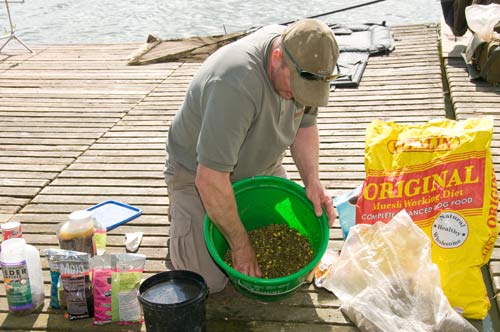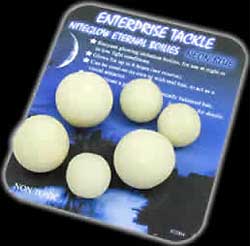Flavours and Tastes
Prologue: Before I begin this piece I’d like to relate its history to you. I started writing it about 14 months ago and sometime earlier last year during a phone conversation with our beloved editor, Graham, I mentioned that I had such an article under construction. I sent the copy by email as we spoke and he immediately said “That looks good. I’m going to use that for my Coarse Fisherman piece this month. I’ll give you a mention if that’s all right.” That was it, folks, so if you feel you’ve read some of this before, I apologise and remind you all, plagiarists are everywhere and never trust your bestest of best friends with any articles! I have had my lesson now!


There’s nothing definitive in this article. I’m not professing to be any kind of an expert in any way despite what I have read in the past. All that I am trying to do is raise the issue and see what anyone else thinks and if there are experts, what’s the official line.
I’ve been making notes on this one over a period of months and then I watched the top chef and TV personality, Heston Blumenthal, talking about tastes and flavours.
Now, you might raise and eyebrow or two when you see some of the combinations he uses in his recipes, salmon poached with liquorice? However, he certainly knows psychology when it comes to tastes and flavours. The first aspect he addresses is the difference between taste and flavour.
Taste is what we sense on the tongue and there are only five different tastes, salt, sweet, sour, bitter, and what is now known as umami. This last taste sense we might relate better in something like monosodium glutamate, a flavour enhancer. I always thought of the fifth taste as being spice, but it’s more than that, it’s the taste that makes you want more like in Chinese cuisine where MG is used extensively and comes naturally in products like soy sauce.
Flavour, on the other hand, comes from the brain and is coupled with smell and a little help from sight. An example being, you see a yellowish ice cream, it smells of banana, so when you put it on your tongue, it tastes of banana. Or does it? It’s really the brain telling you it must be banana because experience has taught you that bananas are yellowish (with off-white flesh) and have that certain distinguishable smell about them.
Blindfold someone, block off their nose and give them a small piece of onion, but tell them it’s part of a slice of apple and they will tell you it’s not a bad apple, quite nice. The texture is very similar in the mouth and the taste is slightly bitter, slightly sweet, same as an apple. So if it tastes like an apple, has the texture of an apple and someone tells you it’s an apple – IT IS AN APPLE!
Think also of the times when you have had a cold and can’t smell anything, the food you eat is flavourless except for salty or sweet, bitter etc. Again, close your eyes and block your nose and try different wines and see if you can tell which is which. Even a flat Coke can taste like a rich burgundy under these circumstances.


The reason I am raising this is because once again during last summer I was building up a stock of boilies with only slightly different smells or colours and I had to remind myself, why? What can the fish actually taste and how do they relate the various smells we offer them? Why am I buying orange tutti-fruiti and yellow pineapple boilies, do the fish really know the difference?
A carp has never before seen a banana and wouldn’t know what colour is associated with one. Therefore, if the top flavour on a carp water is banana flavoured boilies, surely you can dye them bright blue and the carp wouldn’t know any difference. Wouldn’t they just keep munching them the same as yellow ones.
Colour is another grey area (pardon the pun). What colours do fish see? Do they get the full colour spectrum as we think we do or are they like dogs, do they only see in black and white predominantly or do they see the various colours but with certain differences?
Let’s look at an example. Power Pro has brought out it’s braid in Phantom Red colour because, they say, red is the first colour of the spectrum to disappear and so, underwater, Phantom Red becomes invisible at 15 feet deep. It has the longest wave of all the colours therefore blues and ultraviolet must have the shortest wavelength, no?
So how do the fish see these? Does the red fins on a perch completely disappear below 15 feet (the depth suggested) and if so then does blue stand out like a sore thumb? Why then does a gudgeon have those violet spots on their sides? Surely that would make them stand out more to a perch or pike?
And if all this is true, why then do we colour strawberry jam flavoured boilies red when the fish, at below 15 feet, supposedly can’t see them? Do they just keep sucking in bits off the bottom based on the scent of a boily in the hope of maybe getting something to eat? Some argue that red is the best colour of boily.
 Then again, if you saw some bright blue boilies in the shop that were labelled “Strawberry Jam Flavour” would you buy them or avoid them? Or try flavouring some of these luminous neon blue artificial boiliess with a strong strawberry flavouring. Remember, it’s only YOUR experience that associates the colour red with strawberries, a carp has never seen one!
Then again, if you saw some bright blue boilies in the shop that were labelled “Strawberry Jam Flavour” would you buy them or avoid them? Or try flavouring some of these luminous neon blue artificial boiliess with a strong strawberry flavouring. Remember, it’s only YOUR experience that associates the colour red with strawberries, a carp has never seen one!
Do you see where I’m coming from? We buy boilies to please ourselves, don’t we? Okay, so there’s old favourites like Trigga, Multi-plex, Grange and Assassin-8 and they are dull beige, brown or dull red colours, nothing you could ever associate with any distinct flavour. The fish do seem to like them though, as has been proven over the years, and it’s this confidence and experience in their catch-ability that keeps us buying those tried and tested flavours far more than their colours and smells.
In pleasing ourselves we like to see the right colour for the right flavour (smell) of boily. However, have you ever tasted any of the boilies you buy? I don’t recommend you eat great quantities of boilies, but take a little of one in your mouth and see what it is you can taste. Close your eyes and pinch your nose if it will help, but try to get at that basic underlying taste of the ingredients.
Not much eh? That’s what I’ve found, some are a little sweet and some a little salty, but overall not much flavour at all. It’s all in the smell and the colour you want to associate with it.
Many fish’s smell receptors are all over the face, take a look at a pike for example, therefore they have already decided to have a go at eating something before it gets into their mouths. They do have some taste receptors in their mouths, but I believe what mostly happens in their mouths is it is texture that is checked and if there’s anything suspicious about it, the fish will blow it out, or try to. Hence the anti-eject rigs anglers have devised.
ARTIFICIAL BAITS


So why do you buy certain flavours of boilies? Is it the colour that attracts or the smell? Have you ever seen a red pineapple flavoured boily, which should combine the best colour, so we’re told, with one of the best flavours? Or how about a bright pink squid and scopex? Flouro green halibut flavour? I have to admit that I was always a sucker for Cream Cajouser although I never caught a single fish on it.
To a large extent, I reckon if your bait lands within smelling range of a fish, or a fish happens to pass over your bait and it’s hungry, it will try it whatever flavour it might be, providing it senses some food content. Are we being had by bait manufacturers or do we really believe that fish have such a discerning palate?










